Track 1: Acoustics, Vibration, and Phonics
Tuesday, November 17, 2020 12:15 PM – 1:00 PM
Name: Andrea Alù, Ph.D.
Presentation Title: Exotic Wave-Matter Interactions in Metamaterials Based on Broken Symmetries
Abstract: In this talk, I discuss our recent research activity in acoustics and mechanics exploring tailored meta-atoms and suitable arrangements of them forming metamaterials that provide exciting venues to realize new mechanical phenomena and devices. I discuss venues to largely break reciprocity and realize isolation based on broken time-reversal symmetry induced by mechanical motion, spatio-temporal modulation and/or nonlinearities. Time modulation and/or mechanical motion offer an interesting opportunity to realize non-reciprocal devices for guided waves and free-space radiation in acoustics and mechanics, breaking the limitations of static, passive, linear metamaterials and opening tremendous opportunities for new frontiers of wave manipulation. Nonlinearities combined with geometrical asymmetries can also be used to break transmission symmetry and reciprocity, with interesting opportunities in acoustics and mechanics, both static and dynamic. Arrays of these elements also can enable topological order in metamaterials, with unusual sound and mechanical wave transport.
In addition to non-reciprocity, time modulation and mechanical motion open other opportunities for unusual wave interactions. An example is the possibility to pump energy in the system by extracting it from the modulation network. The most common way of achieving this parametric gain phenomenon is to modulate at twice the signal frequency, which may be used to amplify the signal traveling in the modulated system, or broaden its bandwidth of operation. Another opportunity is provided by commutated switching networks, which can convert frequencies with large efficiency, a functionality that can be exploited to establish new regimes of wave propagation and overcome the trade-off between delay and bandwidth in delay elements.
Another class of interesting metamaterials based on broken symmetries are parity-time symmetric metamaterials, which are asymmetric in space, but symmetric upon parity and time inversion. Combining these features provides intriguing phenomena for guided waves, radiation and scattering phenomena, which we will discuss in detail during the talk. These non-Hermitian systems have been drawing large interest in recent years, mostly in the context of quantum mechanics and optics. One particular features that has been raising great interest is the emergence of exceptional point (EP) singularities in which the eigen-values and eigen-vectors coalesce and become degenerate. EP singularities are highly sensitive to small-scale perturbations, hence such systems are being considered towards sensor applications. However, superior sensitivity is anticipated within a narrow parameter space. Therefore, a careful balance of coupling, differential gain and phase-mismatch must be maintained among the system’s degrees of freedom. In this talk, I will discuss the impact and opportunities of these concepts for mechanics and acoustics, and their relevance for unusual wave-matter interactions in scattering systems.
Generally, the opportunities brought by time modulation, mehcanical motion, parametric phenomena, gain, and nonlinearities in the context of mehcanical metamaterials have been opening exciting directions from basic science to practical technology, which will be discussed in depth during the talk.

Bio: Andrea Alù is the Founding Director and Einstein Professor at the Photonics Initiative, CUNY Advanced Science Research Center. He received his Laurea (2001) and PhD (2007) from the University of Roma Tre, Italy, and, after a postdoc at the University of Pennsylvania, he joined the faculty of the University of Texas at Austin in 2009, where he was the Temple Foundation Endowed Professor until Jan. 2018. Dr. Alù is a Fellow of NAI, IEEE, AAAS, OSA, SPIE and APS, and has received several scientific awards, including the IEEE Kiyo Tomiyasu Award, the Vannevar Bush Faculty Fellowship from DoD, the ICO Prize in Optics, the NSF Alan T. Waterman award, the OSA Adolph Lomb Medal, and the URSI Issac Koga Gold Medal.
Track 2: Advanced Manufacturing
Thursday, November 19, 2020 12:15 PM – 1:00 PM
Name: Dr. Cindy Waters
Presentation Title: Additive Manufacturing in Naval and Marine Applications: Lessons Learned and Future Trends
Abstract: Additive manufacturing (AM) is being employed in various naval facilities with many successes in a variety of thrust areas. The global advancements in additive manufacturing (AM) are expansive and the DoD continues to be dedicated to create AM implementation plans, and to fund a national network of manufacturing institutes with an increasing number of research programs. The department of the Navy continues to expand successful AM efforts, including repairs and parts production for noncritical and flight/submarine-critical parts. An update on the status of AM in the Navy will be presented. Though AM can claim many successes in naval applications the technology of advanced manufacturing is a dynamic one. Additional new technique developments are critical as well as ensuring high quality in the production of metal parts in order to fully seize the manufacturing advantages for the warfighter. This talk will discuss the progress of the Additive Manufacturing in Naval and Marine applications through the lens of a thought leader at a Naval Warfare Center and an ONR Manufacturing Program Manager. The emphasis will be on lessons learned to date, expected future directions for deployed use of AM technologies, and a vision for collaboration, as well as how AM will be used to promote Fleet logistics, sustainment and repair.

Bio: Dr. Cindy Waters is the Senior Science Technology Manager (SSTM), Principal for Advanced Materials and Manufacturing, at Naval Surface Warfare Center Carderock (NSWCCD). Dr. Waters joined Carderock in early 2019 in the Additive Manufacturing team as a Senior Research Engineer. She works closely with the branches supporting insertion of Additive Manufacturing technology into the fleet and serves as a leader and technical expert for the Division, Warfare Center, Naval Sea Systems Command, Naval Research and Development Establishment and Department of the Navy in additive manufacturing, materials, and manufacturing processes. She is also serving as the Lead Coordinator of the Manufacturing Engineering Education Program (MEEP) program for Office Naval Research.
She was a tenured Professor of Mechanical Engineering at North Carolina A&T State University before joining NSWCCD. Research projects studied aspects of qualification and characterization of Metal Additive Manufactured parts. Other facets of her research experience focused on the education of engineers and faculty and organizational resistant to change. Her career includes more than 25 years of achievements in a variety of research, classroom, institutional service and collaborative environments. The diverse collaborations included partners at various government agencies including Oak Ridge Manufacturing Demonstration Facility, ONR, Honeywell National Security Campus and Y 12 National Security Complex and Savannah River National Laboratory. She and a partner at Oak Ridge MDF recently published an SAE Deep Dive Book titled "Additive Manufacturing for Designers: A Primer".
She continues to advise, counsel, and collaborate on research and development initiatives across the Naval Research and Development Establishment in addition to conducting research and development projects that advance the state-of-the-art for Naval applications. These are all collaborative efforts with DOD, industry and academia to develop new materials and processes to solve specific naval needs.
Track 3: Advanced Materials: Design, Processing, Characterization and Applications
Name: Dr. Eric Wetzel
Tuesday, November 17, 2020 12:15 PM – 1:00 PM
Presentation Title: Rate-activated tethers: Wearable smart materials to reduce mechanical injuries to the body and brain
Abstract: Injuries during work and play, for both civilians and military personnel, result in lost time, decreased productivity, increased health care costs, and reduced quality of life. A common theme in many of these injuries, from sprained ankles to brain injury, is an association between rapid dynamic mechanical input and injury likelihood. Existing wearable protective devices, including ankle and knee braces, helmets, and body pads, are typically constructed from materials whose low-speed and high-speed behaviors are very similar. In contrast, a dynamically responsive material that transforms into a more protective state during high rate mechanical impulses could improve the comfort and performance of wearable protection.
The U.S. Army Research Laboratory has invented a dynamic strapping material called a "rate-activated tether" (RAT). RATs exhibit elastic compliance at low speeds, similar to elastic straps, but resist extension with up to 100X more force when elongated at high speeds. The rate sensitivity of RATs is derived from an enclosed shear thickening fluid (STF), a colloidal material with speed-sensitive resistance to flow. This talk will describe the basic design and behavior RATs, the influence of STF and component properties, and challenges with integration. A number of application examples will be presented, including goggle straps, ankle braces, and helmet suspensions. In addition, the unique challenges and opportunities associated with technology development and transition at a DoD laboratory will also be discussed.
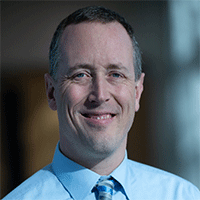
Bio: Dr. Wetzel is the Team Leader for Multifunctional Materials, and Research Area Leader for Soldier Materials, at the U.S. Army Research Laboratory (ARL) in Aberdeen, MD. His research interests span a range of topics, including ballistic textiles, multifunctional composite materials, additive manufacturing, and two-dimensional polymers. Dr. Wetzel has co-authored over 75 peer-reviewed journal publications and book chapters, and holds 20 patents. In 2014, Dr. Wetzel was awarded an NFL Head Health Challenge grant for the investigation of concussion-mitigation technologies, followed by selection in 2015 for a Head Health Challenge Final Award to prepare the technology for commercialization. Dr. Wetzel has also been selected for a 2018 Federal Laboratory Consortium Excellence In Technology Transfer Award, and in 2020 was appointed a Fellow in the National Academy of Inventors.
Track 3: Advanced Materials: Design, Processing, Characterization and Applications
Name: Anthony Rollett
Wednesday, November 18, 2020 11:00 AM – 11:45 AM
Presentation Title: 3D Printing, Synchrotron X-Ray Experiments and Machine Learning
Abstract: 3D printing of metals has advanced rapidly in the past decade and is used across a wide range of industry. Although laser powder bed fusion (LPBF) has matured the fastest for metals, other technologies such as binder jet and (robotic) wire feed are making substantial progress. Many aspects of the technology are considered to be well understood in the sense that machines make parts and temperature histories with residual stress can be simulated. Nevertheless, key questions remain open as to how to qualify printers and certify parts, how to control defect structures, which includes surface condition and how to implement more sophisticated control systems. At the microscopic scale, more work is required to quantify, understand and predict defect- and micro-structures, which affect properties. Strength, for example, is often at least as good as conventionally processed material whereas defect-sensitive properties such as fatigue are more challenging. Synchrotron-based experiments have been particularly illuminating, e.g., dynamic x-ray radiography (DXR) which provides ultra-high speed imaging of laser melting of metals and their powders. This has, e.g., enabled the keyhole phenomenon to be quantified, which in turn has demonstrated the importance of power density, as opposed to energy density. Under typical LPBF conditions, there is almost always a keyhole present. If the power density is too high, the keyhole is unstable and sheds pores that are trapped by solidification. Energy density, while informative, also fails to capture the crucial boundary between full density and lack-of fusion porosity because it does not take account of melt pool overlap. Synchrotron-based 3D X-ray computed microtomography (µXCT) showed that essentially all metal powders exhibit porosity that partially persists into the printed metal. This explanation is reinforced by evidence both DXR and simulation. The links between porosity and process conditions provide a physics-based approach to defining a process window a given machine which, in turn, suggests a route to qualification by measuring and tracking the location of the process window in power-speed-hatch space for any given powder bed printer. To illustrate the power of machine learning, Computer vision (CV) has successfully classified different microstructures, including powders. The power of CV is further demonstrated by its ability to detect and classify defects in the spreading of powder. Machine learning provides new insights on correlations between welding parameters, microstructure and material properties in laser hot-wire weld deposits to Ti-6Al-4V. High speed synchrotron x-ray diffraction is beginning to provide new information on solidification and phase transformation in, e.g., IN718, Ti-6Al-4V and stainless steel. High Energy (x-ray) Diffraction Microscopy (HEDM) experiments also is also providing data on 3D microstructure and local elastic strain in 3D printed materials such as Ti-6Al-4V and stainless steel.
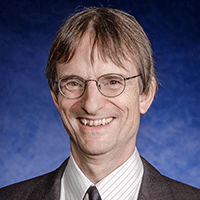
Bio: Rollett's research focuses on microstructural evolution and microstructure-property relationships in 3D. Interests include 3D printing of metals, materials for energy conversion systems, strength of materials, constitutive relations, microstructure, texture, anisotropy, grain growth, recrystallization, formability, extreme value statistics and stereology. Important recent results include high-speed x-ray visualization of laser-drilled keyholes during laser melting, development of a spectral approach to eigenstrain problems, validation of the 3D elasto-viscoplastic FFT code against synchrotron x-ray diffraction data, definition of process windows in 3D printing through characterization of porosity, prediction of solidification microstructure, the appearance of new grains during grain growth, and grain size stabilization. He has been a Professor of Materials Science & Engineering at Carnegie Mellon University since 1995 and before that was with the Los Alamos National Laboratory. He is a Fellow of several professional societies and a member of two federal advisory committees. He is the co-Director of CMU’s NextManufacturing Center that is dedicated to advancing manufacturing especially through 3D printing. He has over 200 peer-reviewed publications.
Track 4: Advances in Aerospace Technology
Name: Dr. Yongming Liu
Thursday, November 19, 2020 12:15 PM – 1:00 PM
Presentation Title: Physics-guided learning in aerospace: from material fracture to system operation
Abstract: Artificial Intelligence (AI) is being explored in almost every engineering discipline in recent years. As a purely data-driven approach, classical AI is known to have poor prediction capability since no physics knowledge is included. This talk presents the concept of Hybrid Intelligence, a physics-guided learning approach that integrates machine learning (artificial intelligence) and physics (human intelligence) for engineering analysis across very different scales in aerospace. The physics-guided learning methodology encodes the underlying physics of engineering problems into machine learning models, and fuses information from abstracted knowledge and observed data together. Three different physics-encoding methods are presented to cover most common engineering problems: encoding in network architecture, encoding in input features, and encoding in output functions. The first method is illustrated using convolutional neural networks (CNN)-based method for partial differential equations (PDEs) and recurrent neural networks (RNN)-based method for ordinary differential equations (ODEs). The second method is illustrated encoding prior physics and knowledge in imaging quantifies to facilitate the learning process. The last method is illustrated using Bayesian Entropy Network (BEN)-based method for constrained probabilistic inference and uncertainty quantification. These different methods are demonstrated with aerospace engineering applications at very different scales, including material fatigue and fracture, structural dynamics, and air traffic control and management. Several future research directions are discussed based on the findings from the current study.

Bio: Yongming Liu is a Professor in mechanical and aerospace engineering at Arizona State University and is the founding director of the Center for Complex System Safety – a joint center of Arizona State University, University of Arizona, and Northern Arizona University. He completed his PhD at Vanderbilt University in 2006, and obtained his Bachelors’ and Masters’ degrees from Tongji University in China in 1999 and 2002, respectively. Dr. Liu’s research interests include prognostics, probabilistic methods, fatigue and fracture, imaging-based experiments, and Bayesian methods. He is the recipient of the Air Force Young Investigator Award in 2011 and has worked with a wide variety of governmental agencies and industrial partners for his research, including NASA, NSF, DOE, DOT, and DOD. He is currently leading a NASA University Leadership Initiative project on information fusion for air traffic management, which focuses on the development of probabilistic learning methods with extensive data resources for air transportation safety assurance.
Track 4: Advances in Aerospace Technology
Name: Fuk-Gwo Yuan
Wednesday, November 18, 2020 11:00 AM – 11:45 AM
Presentation Title: Recent Advances in Optical-based Non-contact Full-field Damage Visualization for Composite Structures
Abstract: Guided wave based nondestructive inspection (NDI)/structural health monitoring (SHM) aims at using ultrasonic guided waves excited within the structure in order to interrogate the structure. By investigating the scattered ultrasonic guided waves in the structure using appropriate signal/image processing algorithms, a wealth of information about the hidden details of the structure can be unearthed, including information about the location of the damage, if present, and its characteristics. Commonly used excitation sources include thermal load, mechanical vibration shaker, air-coupled transducer (ACT), piezoelectric transducer (PZT), pulse laser, etc. and the scattered waves can be sensed using ACT, PZT, optical fibers, EM transducer, photo detector (PD), camera (CCD or CMOS), etc. In the aerospace industry, several optical-based imaging modalities to assess the damage have been developed. This keynote will focus on two recently developed non-contact full-field optical-based techniques for visualizing the barely visibly impact damage (BVID) in composite structures.
The first is an integrated system comprised of an image acquisition device (high-speed camera), digital image correlation (DIC), and an image processing software system which can be termed as GWSHM-IC (Guided Wave based SHM using digital Image Correlation). This study is viewed as the first attempt at using a high-speed camera together with DIC using white light to capture the scattered guided wavefield on the surface of a structure (caused by the wave-damage interactions from the damage underneath the surface) in the near ultrasonic frequency range. A phase-based damage imaging condition, wavenumber index (WI), is employed to image the BVID. Guided waves have the ability to interrogate the entire thickness of plate-like structures over large areas, and the digital camera (camera sensor), where each pixel is considered to effectively act as a sensor, can provide extremely high spatial resolution by measuring these guided waves simultaneously at all the points within the field of view. As such, the use of high-speed digital cameras has promising potential to provide an effective and reliable means for non-contact, large area monitoring in order to identify hidden damage within the structure.
The second non-contact full-field damage image technique involves the use of coherent light to visualizing the BVID in composite structures through speckle interferometry using CCD or high-speed camera. The system comprises two sub-systems (1) laser speckle photometry (LSP) and (2) shearography. Both sub-systems rely on observing the variation of laser speckles in time series without reference arm and are very insensitive to ambient noise where traditional holography/ESPI suffers greatly. Other advantages of LSP/shearography include robust tolerance of laser coherence, larger illumination area, flexible choice of correlation functions, and that more advanced post-processing techniques such as Bayesian updating and inference can be readily applied which holography/ESPI do not possess.
These two non-contact, full-field techniques for damage image are believed to be a significant first step towards that goal of using an integrated high-speed camera system to visualize hidden damage in structures via ultrasonic guided wavefields.
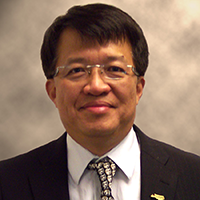
Bio: Dr. Yuan has been with North Carolina State University since 1989. Currently he is a professor at Mechanical and Aerospace Engineering, NC State. he serves as a Samuel P. Langley Professor at National Institute of Aerospace, Hampton, Virginia. His recent research includes structural health monitoring/management, machine learning, multi-functional materials, nano/meso scale sensors, advanced computing tools with smart sensors, damage prognosis, and energy harvesting.
Track 5: Biomedical and Biotechnology
Name: Thomas J. Royston
Tuesday, November 17, 2020 12:15 PM – 1:00 PM
Presentation Title: Forces, Fibers, Fractals, Fractional Calculus and Trans-Formations in Elastography
Abstract: Dynamic elastography imaging, whether based on magnetic resonance, ultrasound or optical modalities, attempts to reconstruct quantitative maps of the viscoelastic properties of biological tissue, properties that are altered by disease and injury. Reconstruction often assumes isotropy and homogeneity and neglects boundary and pre-strain conditions. Many tissue types, such as skeletal muscle, violate most or all these assumptions, posing challenges and opportunities for developing better imaging biomarkers. These challenges are reviewed and novel methods to address them are introduced.
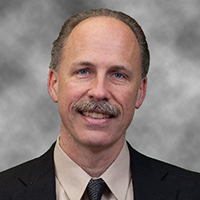
Bio: Thomas J. Royston, Ph.D., Professor and Head of Bioengineering at the University of Illinois at Chicago (UIC), earned his PhD in Mechanical Engineering from Ohio State University in 1995. He has been a faculty member at UIC since 1995, with appointments in Bioengineering and Mechanical Engineering, and head of Bioengineering since 2009. Tom’s NIH and NSF-supported research in mechanical wave motion and imaging in porous and nonporous viscoelastic materials, and acoustics applied to medical diagnostics and therapy has been recognized with the NSF Career Award, the NIH NIBIB Nagy Award and the Acoustical Society of America (ASA) Lindsay Award. He is a Fellow of the American Society of Mechanical Engineers (ASME) and the American Institute for Medical and Biological Engineering (AIMBE). He has served as associate editor for journals of the ASA and ASME, and has published over 88 peer-reviewed journal articles.
Track 5: Biomedical and Biotechnology
Name: Azra Alizad
Wednesday, November 18, 2020 11:00 AM – 11:45 AM
Presentation Title: A Contrast-free Morphometric Microvessel Analysis for Cancer Detection
Abstract: As a focus of intense research, ultrasound as cancer imaging technology is evolving rapidly. Our group has developed several ultrasound technologies and demonstrated their clinical use by testing these techniques on patients. Recently, we have developed novel ultrasound-based imaging for microvasculature visualization and quantification. This method uses a contrast-free ultrasound microvasculature morphometric analysis consisting of a high definition microvasculature imaging for detection and visualization of small sub-millimeter vessels, as well as a method for quantification of vessel architecture to perform quantitative analysis of the microvasculature network in lesions to differentiate malignant from benign. This noninvasive ultrasound-based technology allows physicians to observe vascular changes in diseased tissues and detect abnormalities such as cancerous lesions. This talk encompasses the results of human studies on this newly developed ultrasound technology.
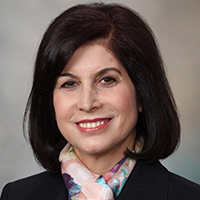
Bio: Azra Alizad, MD received her medical degree and fellowship from Tehran University Medical Sciences. Currently, Dr. Alizad is a professor of Radiology, Department of Radiology and Professor of Biomedical Engineering as well as an associate professor of Medicine at the Mayo Clinic College of Medicine in Rochester MN. In addition to her training in Medicine, she has a broad background and expertise in medical ultrasound research. She leads a translational research laboratory, involving development and application of novel ultrasound technologies such as microvasculature imaging, functional ultrasound, elastography, vibro-acoustic imaging for diagnosis of abnormalities in breast, thyroid, prostate, neck masses, and axillary lymph nodes, brain and bone. Dr. Alizad is the principal investigator of multiple major federal grants funded by the National Institute of Health (NIH) and recipient of grant funded by Komen Breast Foundation for the Cure. She is an elected Fellow of American Institute for Medical and Biological Engineering (AIMBE) and American Institute of Ultrasound in Medicine (AIUM). In addition to senior member of Institute of Electrical and Electronics Engineers-UFFC, she also holds membership of several other professional societies, including Radiological Society of North America (RSNA), American Medical Association, American Association for Cancer Research (AACR) and AACR-WICR (Women in Cancer Research), AACR-MICR (Minorities in Cancer Research), Acoustic Society of America, American Society for Breast Diseases. At the Mayo Clinic, she is also an active member of the Mayo Clinic Cancer Center and the Center for Clinical and Translational Science.
Track 6: Design, Systems and Complexity
Name: Satyandra Kumar Gupta
Tuesday, November 17, 2020 12:15 PM – 1:00 PM
Presentation Title: Smart Collaborative Robots for Manufacturing Applications
Abstract: Many emerging robotics applications require the use of multiple collaborating robots to operate under human supervision. To be useful in such applications, collaborative robots will need to (1) program themselves, (2) efficiently learn from the observed performance, (3) safely operate in the presence of uncertainty, (4) appropriately call for help during the execution of challenging tasks, and (5) effectively communicate with humans. This presentation will provide an overview of the advances in physics-aware artificial intelligence that are being used to enable robots to automatically make decisions to meet aforementioned requirements. First, we will present an approach for automatically generating near-optimal trajectories in real-time to enable robots to program themselves from task descriptions. Second, we will describe self-directed learning methods to equip robots with the ability to learn from observing the performance of previously-executed tasks and adapting their plans. Third, we will describe methods for robots to operate safely in the presence of uncertainty by generating contingency-aware plans. Fourth, we will discuss computational methods for endowing robots with introspective capabilities so that they can seek help from humans on challenging tasks. Finally, we will present augmented reality-based interfaces for enabling robots to elicit human guidance during the decision making process. The use of collaborative robots can significantly improve human productivity and eliminate the need for human involvement in tasks that pose risks to human safety. Assembly, composite layup, machine tending, and sanding tasks will be used as illustrative examples to show how smart collaborative robots can be used in high mix manufacturing applications.
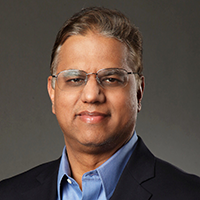
Bio: Dr. Satyandra K. Gupta is Smith International Professor in the Department of Aerospace and Mechanical Engineering and Department of Computer Science in Viterbi School of Engineering at the University of Southern California (USC). He served as a program director for the National Robotics Initiative at the National Science Foundation from September 2012 to September 2014. Dr. Gupta's interests are in the area of physics-aware decision making to facilitate and advance the state of automation. He has published more than three hundred fifty technical articles. He is a fellow of the American Society of Mechanical Engineers (ASME), Institute of Electrical and Electronics Engineers (IEEE), and Society of Manufacturing Engineers (SME). He serves as the editor of the ASME Journal of Computing and Information Science in Engineering. Dr. Gupta has received numerous honors and awards for his contributions to the scientific community. Representative examples include: the Young Investigator Award from the Office of Naval Research in 2000, Robert W. Galvin Outstanding Young Manufacturing Engineer Award from the Society of Manufacturing Engineers in 2001, CAREER Award from the National Science Foundation in 2001, Presidential Early Career Award for Scientists and Engineers (PECASE) in 2001, Invention of the Year Award at the University of Maryland in 2007, Kos Ishii-Toshiba Award from ASME in 2011, Excellence in Research Award from ASME Computers and Information in Engineering Division in 2013, and Distinguished Alumnus Award from Indian Institute of Technology, Roorkee in 2014. He has also received ten best paper awards at international conferences.
Track 7: Dynamics, Vibration, and Control
Name: Bala Balachandran
Wednesday, November 18, 2020 11:00 AM – 11:45 AM
Presentation Title: COVID-19: Data-Driven and Delay Dynamics
Abstract: COVID-19 was declared as a pandemic by WHO on March 11, 2020. Here, the dynamics of this epidemic is studied by using a generalized Logistic Function model and compartmental models with and without delays. It is shown as to how forecasting may be done on the spreading of the infection in a chosen population by using a generalized Logistic Function model. In the compartmental model, the population is divided into susceptible, exposed, infected, and recovered and deceased compartments, and a set of delay differential equations are used to describe the system. The critical role of data is elucidated, and it is discussed as to how the compartmental model can be used to capture various aspects including quarantining. The obtained results can be useful for furthering our understanding of disease dynamics as well as planning purposes.
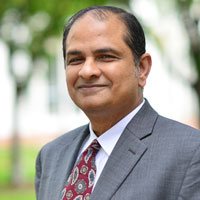
Bio: Dr. Balachandran received his B. Tech (Naval Architecture) from the Indian Institute of Technology, Madras, India, M.S. (Aerospace Engineering) from Virginia Tech, Blacksburg, VA, USA and Ph.D. (Engineering Mechanics) from Virginia Tech. Currently, he is a Minta Martin Professor of Engineering at the University of Maryland, where he has been since 1993. His research interests include nonlinear phenomena, dynamics and vibrations, and control. The publications that he has authored/co-authored include a Wiley textbook entitled "Applied Nonlinear Dynamics: Analytical, Computational, and Experimental Methods" (1995, 2006), a Cambridge University Press textbook entitled "Vibrations" (2019), and a co-edited Springer book entitled "Delay Differential Equations: Recent Advances and New Directions" (2009). Currently, he serves as the Editor of the ASME Journal of Computational and Nonlinear Dynamics and a Contributing Editor of the International Journal of Non-Linear Mechanics. He is a Fellow of ASME and AIAA and a senior member of IEEE.
Track 7: Dynamics, Vibration, and Control
Name: Anil Bajaj
Thursday, November 19, 2020 12:00 PM – 1:00 PM
Presentation Title: Design with Internal Resonances: From Macro to Micro Nonlinear Resonators
Abstract: Most micro-electromechanical resonator designs are based on linear resonant operation of micro-structures vibrating in flexural or torsional modes. Novel microresonators that utilize “internal resonance” phenomena and nonlinear interactions in structural modes are described. The focus is on systems with 1:2 and 1:3 internal resonances between two structural modes and their nonlinear interactions in the presence of nonlinearities. A technique for design of such resonators is described and few specific cases, including the beam-type designs – the T-resonator, the pedal resonator, and plate-type designs, are described. Detailed analytical modeling includes inertial quadratic, and stretching and curvature cubic nonlinearities, electrostatic potential, and effects of thermal pre-stress. Lagrangian formulation and nonlinear two-mode reduced-order models are used to investigate possible static pull-in limits as well as nonlinear resonant dynamics with mass-sensing applications. Uncertainty Quantification and Sensitivity Analysis techniques are applied to understand the most significant geometric design parameters affecting the performance of the resonators.

Bio: Anil K. Bajaj is the Alpha P. Jamison Professor of Mechanical Engineering at Purdue University. He served as a Visiting Professor and Arcot Ramachandran Chair in Department of Applied Mechanics at the Indian Institute of Technology Madras and Chennai, India, in 2019-2020. He was the William E. and Florence E. Perry Head of Mechanical Engineering (6/2011-6/2019) and Associate Head for Research and Graduate Education (1998-2010), all at Purdue. Dr. Bajaj completed his B.Tech. (1973) and M.Tech. (1976), both in Mechanical Engineering from the Indian Institute of Technology, Kharagpur and Kanpur, India, respectively, and PhD in Mechanics (1981) from the University of Minnesota. Dr. Bajaj’s research is in the areas of nonlinear dynamics of structural systems; linear stability and dynamics of systems and structures; brake squeal predication and sensitivity analysis; dynamics of seat-occupant systems; MEMS designs using nonlinear resonances; flow-induced dynamics of elastic bodies; and modeling of Viscoelastic Properties of Foam. He is a Fellow of the ASME, and has received many Purdue University awards ("Provost's Award for Outstanding Graduate Mentors", Purdue Graduate School, 2006; College of Engineering "Mentorship" Award for Faculty Excellence, "Team" Award for Faculty Excellence, 2009). He has published more than 225 archival journal and conference proceedings papers, and has advised (or co-advised) more than 45 M.S. and Ph.D. students. Dr. Bajaj served as a Contributing Editor of the journal Nonlinear Dynamics till 2015. He was awarded the 2019 Thomas K. Caughey Dynamics Award by the Applied Mechanics Division (AMD) of the ASME.
Track 8: Energy
Panel Title: Grand Challenges in Energy Research
Wednesday, November 18, 2020 5:10 PM – 6:10 PM
Moderators: Eric Loth (University of Virginia) and Partha P. Mukherjee (Purdue University)
Support: ASME Mechanical and Engineering Heads Committee (MEDHC) chaired by Eric Loth, ASME Advanced Energy Systems Division (AESD) and IMECE Energy Track chaired by Partha P. Mukherjee
Abstract: This is an inaugural panel that brings world-class university thought leaders and National Academy of Engineering (NAE) members together, who will provide their perspectives on the frontiers of multi-faceted research and engagement needs and opportunities in the broader context of energy science and engineering.
Panelists: Jayathi Murthy, Ajay Malshe, and Mark O'Malley
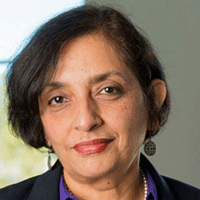
Jayathi Murthy is the Ronald and Valerie Sugar Dean of Henry Samueli School of Engineering and Applied Science at the University of California, Los Angeles. Before joining UCLA as the first woman Dean of Engineering in January 2016, Murthy was Chair of the Department of Mechanical Engineering at the University of Texas at Austin, and held the Ernest Cockrell Jr. Memorial Chair in Engineering. Prior to joining the University of Texas at Austin, Murthy was the Robert V. Adams Professor of Mechanical Engineering at Purdue University from 2008 to 2011. Before joining Purdue, she was a professor of mechanical engineering at Carnegie Mellon University in Pittsburgh. Earlier, she worked for ten years at New Hampshire-based Fluent, Inc., a developer and vendor of the world’s most widely used computational fluid dynamics software, where she led the development of algorithms that are widely used in the CFD world. She is a member of the National Academy of Engineering (NAE), foreign fellow of the Indian National Academy of Engineering (INAE), fellow of the American Society of Mechanical Engineers (ASME), and the recipient of many honors, including the ASME Heat Transfer Memorial Award in 2016. Murthy is the author of more than 330 technical publications.
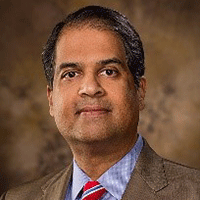
Ajay Malshe is currently R. Eugene and Susie E. Goodson Distinguished Professor of Mechanical Engineering at Purdue University. Before joining the Purdue faculty, he served as a Distinguished Professor and 21st Century Endowed Chair Professor in the Department of Mechanical Engineering at the University of Arkansas. He has gained a national and international reputation in advanced manufacturing, bio-inspired designing, multifunctional material surface engineering and system integration and productization. Malshe has received numerous prestigious international honors, including fellowships to the American Society of Mechanical Engineering (ASME), American Society of Materials (ASM), International Academy of Production Engineering (CIRP), and the Institute of Physics (InstP). In 2018, he was elected to the National Academy of Engineering (NAE) “for innovations in nanomanufacturing with impact in multiple industry sectors.” Malshe has trained more than 60 graduate and post-doctoral students, educated more than 1200 undergraduate students and mentored younger engineers in academia and business; published over 200 peer-reviewed manuscripts and received over 20 patents resulting in numerous award-winning engineered products applied by leading corporations in energy, aerospace, transportation and EV, high-performance racing and other industrial sectors; and delivered over 100 keynote and invited presentations. He is also a founder and experienced business entrepreneur.
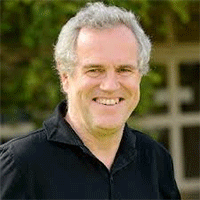
Mark O'Malley is the Professor of Electrical Engineering at University College Dublin (UCD) and founding Director of the Electricity Research Centre, a multidisciplinary, multi institutional, industry supported research activity. He is a foreign member of the US National Academy of Engineering (NAE), a member of the Royal Irish Academy, and a Fellow of the Institute of Electrical and Electronic Engineers (IEEE) and has received two Fulbright Fellowships. Mark is recognized as a world authority on Energy Systems Integration and in particular Grid Integration of Renewable Energy. He was a visiting researcher on sabbatical at the US National Renewable Energy Laboratory as Chief Scientist, Energy Systems Integration. He was the co-founder and Director of the International Institute of Energy Systems Integration which in 2018 merged with the Utility Variable Integration Group to form the Energy Systems Integration Group (ESIG). He is now the Chair of the ESIG Research and Education Working Group.
Track 9: Engineering Education
Name: Kendra Sharp
Thursday, November 19, 2020 12:00 PM – 1:00 PM
Presentation Title: Global Learning in Engineering Education: Five W's and one H
Abstract: A need to better prepare graduates to work effectively in an increasingly globalized society combined with a desire to increase the reach and impact of our educational institutions themselves drives a growing demand for comprehensive internationalization in higher education. Arguably, the ability of workforce professionals (and our graduates) to operate in more diverse settings, with cross-cultural competence, is critical for maintaining economic competitiveness. Leaders of the engineering profession agree. The American Society of Engineering Education’s Corporate Member Council indicated a need for engineers to develop cross-cultural competencies such as embracing diverse viewpoints, possessing a global and multidisciplinary perspective, and maintaining an awareness of ethical nuances across differences in cultural context. The new ABET accreditation criteria for engineering programs has further underscored the expectation that engineering programs must include curricular elements ensuring that students gain the ability to understand global, economic, environmental and societal context in engineering practice. In this presentation, Dr. Sharp will discuss the five W’s (Who? What? Where? When? Why?) and one H (How?) for integrating global learning into our engineering education efforts. She will describe different approaches to integrating global learning, including efforts such as Oregon State University’s (OSU’s) Humanitarian Engineering Program. Lastly, she will provide some context around COVID-19’s impact on institutional global learning efforts from her experience as OSU’s Senior Advisor to the Provost for International Affairs in 2020. At the same time national borders were shutting down and global travel restrictions skyrocketing, COVID-19 shined a spotlight on our level of global interconnectedness, and the importance of global research and science diplomacy to our shared future. She will discuss her institution’s response relative to global learning opportunities, and initial thoughts regarding COVID-19’s influence on her institution’s future plans for global learning.
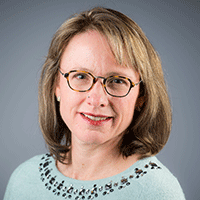
Bio: Dr. Kendra Sharp is the Senior Advisor to the Provost for International Affairs at Oregon State University (OSU) and Professor of Mechanical Engineering. In her administrative role, she provides leadership for the development and implementation of strategic initiatives in internationalization and global engagement at OSU. She also founded and directs OSU’s Humanitarian Engineering Program. She believes deeply in the value of interdisciplinary education and research, and using engineering and technology for positive social impact. In collaboration with faculty, students, non-governmental organizations (NGOs), and social entrepreneurs, she works to address global issues in poverty, energy, and water through engineering design and international education. Recent awards include an Erskine Fellowship at the University of Canterbury (New Zealand), ASME's Edwin F. Church Medal, OSU’s College of Engineering Faculty Mentoring Award, and OSU’s International Service Award. Kendra received her Ph.D. and B.S. degrees from the University of Illinois at Urbana-Champaign, and Master's degrees from the University of Cambridge (UK), and the University of California-Berkeley.
Track 10: Fluids Engineering
Name: Dennis Bushnell
Thursday, November 19, 2020 12:00 PM – 1:00 PM
Presentation Title: Flow Control Applications
Abstract: Flow control, aka “Designer Fluid Mechanics,” has a long history with many successes across a plethora of applications. This report addresses the characteristics of the approaches that are actually used, why they are used, the many approaches that are not used, and why. Analysis indicates ways forward to increase applicability/usefulness, and efficiency of flow control research. Overall, greater and more effective progress in flow control requires utilization of far more detailed information early in the research process regarding application details and requirements.
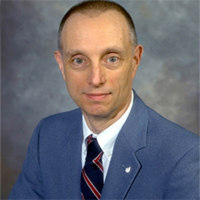
Bio: Dennis M. Bushnell is currently Chief Scientist at NASA Langley Research Center in Hampton, Virginia. He is responsible for Technical Oversight and Advanced Program formulation for a major NASA Research Center with technical emphasis in the areas of Atmospheric Sciences and Structures, Materials, Acoustics, Flight Electronics/Control/Software, Instruments, Aerodynamics, Aerothermodynamics, Hypersonic Airbreathing Propulsion, Computational Sciences and Systems Optimization for Aeronautics, Spacecraft, Exploration and Space Access. He has had 52 years of experience as Research Scientist, Section Head, Branch Head, Associate Division Chief and Chief Scientist. His technical specialties include Flow Modeling and Control across the Speed Range, Advanced Configuration Aeronautics, Aeronautical Facilities, Advanced Power and Energy, Planetary Exploration and Hypersonic Airbreathing Propulsion. He is Member of National Academy of Engineering, Fellow of ASME, Honorary Fellow of AIAA, and Fellow of the Royal Aeronautical Society. He authored 252 publications/major presentations and 350 invited lectures/seminars. He received B.S. in M.E. degree from University of Connecticut with Highest Honors, Distinction, and University Scholar in 1963, and M.S. degree in M.E. from University of Virginia in 1967.
Track 11: Heat Transfer and Thermal Engineering
Name: Amy Marconnet
Tuesday, November 17, 2020 12:15 PM – 1:00 PM
Presentation Title: Engineering Materials for Thermal Challenges
Abstract: Heat transfer is a limiting factor in reliability and performance of next-generation batteries, electronic devices, and electric vehicles. Mobile platforms with limited heat dissipation pathways are becoming ubiquitous while requiring integration of dissimilar materials and components with a high density of interfaces and placing additional constraints on device performance. Open challenges exist in optimizing and tuning the thermal transport within these heterogeneous systems, while meeting constraints on mechanical properties and device performance. Ultimately, efficient, thermally informed engineering is needed to translate research into technology and requires integrated modeling, experiments, and materials development. This talk describes several recent examples of engineering materials from the nano- and micro-structural level to achieve targeted performance objectives.
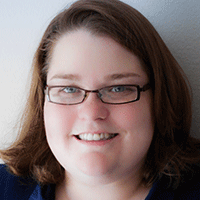
Bio: Amy Marconnet is an Associate Professor of Mechanical Engineering at Purdue University. She received a B.S. in Mechanical Engineering from the University of Wisconsin – Madison in 2007, and an M.S. and a PhD in Mechanical Engineering at Stanford University in 2009 and 2012, respectively. She then worked briefly as a postdoctoral associate at the Massachusetts Institute of Technology, before joining the faculty at Purdue University in August 2013 as an Assistant Professor. She was promoted to Associate Professor in August 2019. At Purdue, Dr. Marconnet has made significant contributions to the field of heat transfer developing an interdisciplinary research program to evaluate, understand, and control the physical mechanisms governing the thermal transport properties of materials, machines, and systems. Her research group has made significant advances to the development of novel metrology tools for characterizing transport properties, enhanced understanding of fundamental transport and energy conversion mechanisms, and strategic, physics-based design and development of materials with multi-functional capabilities. In 2017, she won the Woman Engineer of the Year Award from the ASME Electronics & Photonics Packaging Division and, in 2020, she was recognized as the Outstanding Graduate Student Mentor for Mechanical Engineering by the College of Engineering at Purdue and the Bergles-Rohsenow Young Investigator Award in Heat Transfer from ASME.
Track 11: Heat Transfer and Thermal Engineering
Name: James Klausner
Wednesday, November 18, 2020 11:00 AM – 11:45 AM
Presentation Title: Delivering Transformational Solutions to Engineering Grand Challenges using High Temperature Thermochemistry
Abstract: The field of thermochemistry has been delivering creative engineering solutions since the early glass foundries dating back several millennia. In recent years, there has been a resurgence of interest in high temperature thermochemistry, driven by concentrated solar power applications. Recent engineering advances in high temperature thermochemistry are characterized by extreme operating environments (1500C) and extreme energy fluxes (5 MW/m2). As such, challenges to robust engineering solutions include material stability, material failure, aggressive corrosion, thermal management, joining and sealing, process control with highly variable inputs, and high capital costs, among others. Despite the extreme engineering challenges, there has been a global effort to advance the state of the art and bring high temperature thermochemistry engineering systems to operational reality at scale. This talk will focus on several societal engineering grand challenges and explore some of the transformational thermochemistry solutions brought to bear. Some engineering grand challenges to be considered include the capture and utilization of solar energy to synthesize carbon neutral fuel, low cost grid-scale renewable energy storage, low carbon and low energy production of metals, and thermal management of hypersonic vehicles.

Bio: Dr. James Klausner is an MSU Foundation Professor and Mechanical Engineering Department Chair at Michigan State University (2016-present). He formerly served as Chair of the ASME Heat Transfer Division (2011-2012). He serves on the board of directors for the American Society of Thermal Fluid Engineers and the International Titanium Association Foundation. For three and a half years he served as a Program Director at the U.S. Department of Energy Advanced Research Projects Agency-Energy (ARPA-E). Prior to that he held the Newton C. Ebaugh Professorship in Mechanical and Aerospace Engineering at the University of Florida (1989-2015). He received his Ph.D. degree in 1989 from the University of Illinois, Urbana-Champaign. He has made substantial fundamental contributions to understanding the dynamics of boiling heat transfer systems. He has made many fundamental and applied research contributions in high temperature thermochemistry, waste heat and solar driven desalination, and high heat flux phase-change heat transfer. Dr. Klausner has authored more than 150 refereed publications, and his theoretical work on boiling dynamics is included in the Handbook of Heat Transfer. He is the author of ten patents and four provisional patents. He is a Fellow of the American Society of Mechanical Engineering and the American Society of Thermal Fluid Engineers. He is a recipient of the ASME Heat Transfer Division Memorial Award and the 75th Anniversary Award.
Track 12: Mechanics of Solids, Structures and Fluids
Name: John Rogers
Tuesday, November 17, 2020 12:15 PM – 1:00 PM
Presentation Title: Mechanics of 3D Mesostructures and Their Applications
Abstract: Complex, three dimensional (3D) assemblies of micro/nanomaterials form naturally in biological systems, where they provide sophisticated function in even the most basic forms of life. In spite of their broad potential utility in man-made devices, design options for analogous abiotic 3D mesostructures are severely constrained by the comparatively primitive capabilities that are available with established techniques for materials growth, assembly and 3D printing. This talk summarizes progress on strategies that rely on geometric transformation of preformed 2D functional micro/nanostructures into 3D architectures by controlled processes of actively induced compressive buckling. The emphasis is on the foundational materials and mechanics principles, computational approaches that enable inverse designs, and examples of applications in areas ranging from thermoelectrics to microelectromechanical systems to passive microfliers to biologically inspired open mesoscale microfluidic/electronic networks as functional interfaces to 3D cell cultures, including spheroids, organoids, assembloids and mini-brains.

Bio: Professor John A. Rogers obtained BA and BS degrees in chemistry and in physics from the University of Texas, Austin, in 1989. From MIT, he received SM degrees in physics and in chemistry in 1992 and the PhD degree in physical chemistry in 1995. From 1995 to 1997, Rogers was a Junior Fellow in the Harvard University Society of Fellows. He joined Bell Laboratories as a Member of Technical Staff in the Condensed Matter Physics Research Department in 1997, and served as Director of this department from 2000 to 2002. He then spent thirteen years on the faculty at University of Illinois, most recently as the Swanlund Chair Professor and Director of the Seitz Materials Research Laboratory. In the Fall of 2016, he joined Northwestern University as the Louis Simpson and Kimberly Querrey Professor of Materials Science and Engineering, Biomedical Engineering and Medicine, with affiliate appointments in Mechanical Engineering, Electrical and Computer Engineering and Chemistry, where he is also Director of the recently endowed Querrey Simpson Institute for Bioelectronics. He has published more than 750 papers, is a co-inventor on more than 100 patents and he has co-founded several successful technology companies. His research has been recognized by many awards, including a MacArthur Fellowship (2009), the Lemelson-MIT Prize (2011) and most recently the Benjamin Franklin Medal (2019). He is a member of the National Academy of Engineering, the National Academy of Sciences, the National Academy of Medicine, the National Academy of Inventors and the American Academy of Arts and Sciences.
Track 12: Mechanics of Solids, Structures and Fluids
Name: Huajian Gao
Wednesday, November 18, 2020 11:00 AM – 11:45 AM
Presentation Title: Mosquito bite prevention through 2D materials thin films
Abstract: The mosquito is the world’s most important vector for transmission of infectious disease, and chemical agents now used for mosquito bite prevention have various environmental or human health side effects. Recently we have explored a nonchemical method for mosquito bite prevention based on graphene [1]. It was demonstrated that multilayer graphene films in the dry state completely inhibit biting by preventing mosquitos from sensing skin- or sweat-associated chemicals used to locate blood meals, and in some cases, the graphene films also act as mechanical barriers to the penetration of the mosquito fascicle, its feeding apparatus. This work suggests a nanotechnology-based approach to fighting against mosquito and associated disease transmission, as well as provides an initial set of guidelines for the development of 2D materials based protective technologies on skin or within smart fabrics.
Reference: [1] C.J. Castilho, D. Li, M. Liu, Y. Liu, H. Gao and R.H. Hurt, "Mosquito Bite Prevention through Graphene Barrier Layers," 2019, Proceedings of the National Academy of Sciences of USA, Vol. 116(37), pp. 18304-18309. DOI: 10.1073/pnas.1906612116
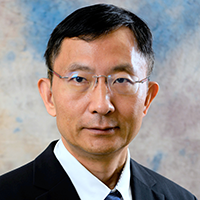
Bio: Huajian Gao received his B.S. degree from Xian Jiaotong University in 1982, and his M.S. and Ph.D. degrees in Engineering Science from Harvard University in 1984 and 1988, respectively. He served on the faculty of Stanford University from 1988-2002, where he was promoted to Associate Professor with tenure in 1994 and to Full Professor in 2000. He served as Director at the Max Planck Institute for Metals Research from 2001-2006, and then as the Walter H. Annenberg Professor of Engineering at Brown University from 2006-2019. At present, he is one of the 5 Distinguished University Professors at Nanyang Technological University and Scientific Director of the Institute of High Performance Computing in Singapore.
Professor Gao's research has been focused on the understanding of basic principles that control mechanical properties and behaviors of materials in both engineering and biological systems. He is the Editor-in-Chief of Journal of the Mechanics and Physics of Solids, the leading journal of his field. He has been elected to memberships in US National Academy of Sciences, US National Academy of Engineering, American Academy of Arts and Sciences, German National Academy of Sciences and Chinese Academy of Sciences. He has also received numerous awards and honors, including the John Simon Guggenheim Fellowship, the Rodney Hill Prize in Solid Mechanics from the International Union of Theoretical and Applied Mechanics, the William Prager Medal from Society of Engineering Science, the Nadai Medal from American Society of Mechanical Engineers and the Theodor von Karman Medal from American Society of Civil Engineers.
Track 13: Micro- and Nano-Systems Engineering and Packaging
Name: Karl F. Böhringer
Thursday, November 19, 2020 12:15 PM – 1:00 PM
Presentation Title: Moving Drops on Micro-structured Surfaces
Abstract: The dynamic interaction between liquid drops and a solid surface is greatly influenced by its microscopic structure, including its topography and material composition. While phenomena such as capillarity and hydrophobicity have been studied for many years, recent research has produced remarkable new insights in this field. Here, we review the physical principles that produce movement of drops, develop models for their behavior, discuss the design and fabrication of micro-structured surfaces, and demonstrate several applications including self-cleaning surfaces and a microfluidic platform for parallel processing of liquid samples.
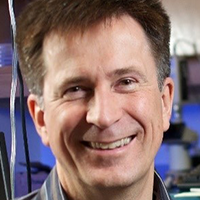
Bio: Karl F. Böhringer received his Dipl.-Inform. degree from the University of Karlsruhe, Germany in 1990 and his M.S. / Ph.D. degrees in computer science from Cornell University, Ithaca, NY in 1993 / 1997. He was a Visiting Scholar at Stanford University in 1994-95 and a Postdoctoral Researcher at the University of California, Berkeley from 1996 to 1998. He joined the University of Washington in Seattle, WA in 1998, where he is currently Professor of Electrical & Computer Engineering and Bioengineering, Director of the Nano-engineered Systems Institute, and Site Director for the University of Washington / Oregon State University node in the NSF National Nanotechnology Infrastructure Network. He held visiting faculty positions at the Universities of Tohoku, Tokyo, Kyoto (Japan), São Paulo (Brazil) and École Polytechnique Fédérale de Lausanne (Switzerland).
Karl F. Böhringer is a fellow of IEEE. His awards include the John M. Fluke Distinguished Chair of Engineering at the University of Washington in 2010, an Invitational Fellowship for Research in Japan by the Japan Society for the Promotion of Science (JSPS) in 2004, an IEEE Robotics & Automation Society Academic Early Career Award in 2004, an NSF CAREER Award in 1999, and an NSF Postdoctoral Associateship in 1997. His work was listed among the “Top 100 Science Stories of 2002” in Discover magazine. He has served as editor for ASME/IEEE Journal of Microelectromechanical Systems, IEEE Transactions on Automation Science and Engineering, Frontiers in Mechanical Engineering and Microsystems & Nanoengineering. He has served, among others, on the technical program committees for the IEEE International Conference on Microelectromechanical Systems (MEMS) and the International Conference Solid-State Sensors, Actuators and Microsystems (Transducers) conferences, and he was general co-chair of IEEE MEMS in 2011.
Track 14: Safety Engineering, Risk, and Reliability Analysis
Name: M. Elisabeth Paté-Cornell
Wednesday, November 18, 2020 11:00 AM – 11:45 AM
Presentation Title: On the Management of Cyber Risk: Five Quantitative Studies
Abstract: Cyber risk analysis involves a quantitative representation of the network and its failure probability under cyber attack given the behaviors of both the attacker and the defender. I will present a general model structure and five specific studies (PhD theses) from the Stanford Engineering Risk Research Group: 1. The cyber risk of a space organization, 2. The optimal level of connectivity in a network, balancing the risks and the benefits of added links, 3. The optimal timing of updating or replacing the software in a system, 4. Warnings of cyber attacks, and 5. The cyber aspects of fake news.
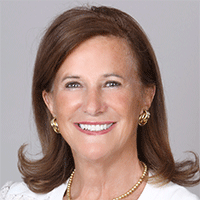
Bio: Dr. Marie-Elisabeth Paté-Cornell is a Professor and the Founding Chairman of the Management Science and Engineering department at Stanford. Her specialty is engineering risk analysis, with applications to complex systems (space, medical, offshore platforms, cyber security, nuclear, etc.). She is a member of the National Academy of Engineering, the French Académie des Technologies, the Naval Post-Graduate School Advisory Board and the NASA Advisory Council. She was a member of the President’s Foreign Intelligence Advisory Board (2001 to 2008) and several other boards. She holds a BS in Mathematics and Physics, an Engineering degree in Applied Math/CS), an MS in Operations Research and a PhD in Engineering-Economic Systems both from Stanford University. Her current research focuses on cyber risk analysis, generally for a specified organization, and related topics.